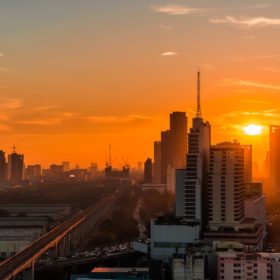Can Nam Ngum solar replace Mekong hydro in Laos?
The Lancang-Mekong River is being decimated by hundreds of tributary and mainstream hydroelectric projects from the Tibetan Plateau in China to Lower Sesan in Cambodia. On the Mekong, the Laos Government has constructed the majority of these projects and it is planning even more. But why does it only focus on hydroelectric power plants (HPP’s)? What about other renewable energy sources? Can Nam Ngum solar replace Mekong hydro?
Solar industry counts seven human rights allegations
The Business & Human Rights Resource Centre has published a report looking at the human rights due diligence performance of the renewables industry and examined individual generation methods. The report finds that, while the solar sector is not top of the sad list, its vest also isn’t completely unstained.
Cost of developing renewables in Southeast Asia put through new mapping tool
Using an application based on resource data and country-specific techno-economic inputs, a report has analyzed the costs of developing utility scale renewables in Southeast Asia and found abundant, cost-competitive potential.
ADB invests $155 million in Thai green bonds
The bank continues its involvement in Thailands largest IPP B.Grimm, which is set to grow its renewable energy portfolio. According to ADB, the green bond proceeds will go to nine operational solar PV plants with a cumulative rating of 67.7 MW, and 30.8 MW that are currently still under construction.
IRENA and southeast Asian nations pledge action on PV
The International Renewable Energy Agency wants to unlock the PV potential of the Asia-Pacific region with technical and planning support. It says a better flow of knowledge is needed to close the gap on a regional aim of generating 23% of energy from renewables by 2025.
Renewables to drive economic growth in SE Asia — IRENA
The 10 members of the Association of Southeast Asian Nations (ASEAN) are on track to make solar and other renewables account for 23% of the region’s total primary energy supply (TPES) by 2025, but governments will need to create better policy and investment frameworks to make it happen, according to the International Renewable Energy Agency (IRENA).






